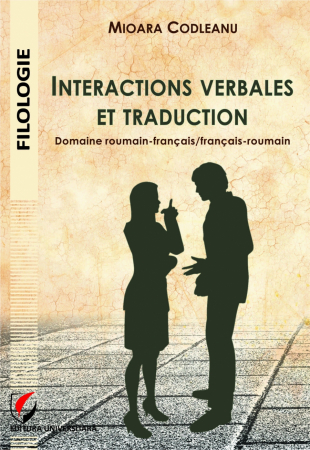Manuscript proposals: [email protected] / 0745 204 115 //// Tracking orders Individuals / Sales: 0745 200 357 / Orders Legal entities: 0721 722 783
6359.png) The Heroic Epic or Fearing the Reality of a Disaffected Future: The Hunger Games Film Series - Alexandra Marginean
The Heroic Epic or Fearing the Reality of a Disaffected Future: The Hunger Games Film Series - Alexandra Marginean
6359.png)
ISBN: 978-606-28-0859-4
DOI: 10.5682/9786062808594
Publisher year: 2019
Pages: 294
Publisher: Editura Universitară
Author: Alexandra Marginean
Product Code:
9786062808594
Do you need help?
0745 200 357
- Download (1)
- Authors
- Content
- More details
- Reviews (0)
-
The Heroic Epic or Fearing the Reality of a Disaffected Future: The Hunger Games Film Series
Download
ALEXANDRA MARGINEAN
FOREWORD/ 7
1. STORYLINES /12
1.1 The Hunger Games / 12
1.2 The Hunger Games: Catching Fire / 16
1.3 The Hunger Games: Mockingjay – Part 1 / 23
1.4 The Hunger Games: Mockingjay – Part 2 /27
2. THE SIGNIFICANCE OF THE “HUNGER GAMES” /34
2.1 The Capitol / 34
2.2 A Scapegoating Device /38
2.3 The Carnivalesque / 45
3. LINGUISTIC ASPECTS/ 53
3.1 The Vocabulary of The Hunger Games/ 53
3.2 The Significance of Names / 59
4. THE SCAPES/ 85
4.1 The Districts/ 85
4.2 The City – The Capitol / 92
4.3 The Environment of the Hunger Games /100
5. POST-EVENT FORMS OF ORGANIZATION / 113
5.1 Totalitarianism - Surveillance and Technologization.Television/ 118
5.2 Psychology and Trauma/ 158
6. SYMBOLS OF RESISTANCE/ 217
6.1 The Mockingjay /217
6.2 Fire /228
6.3 The White Rose/ 234
6.4 Sounds, Songs and Verbalized Leitmotifs/ 240
6.5 Signs/246
6.6 Video Feeds/ 249
7. FASHION / 253
AFTERWORD /279
References /285
1. STORYLINES /12
1.1 The Hunger Games / 12
1.2 The Hunger Games: Catching Fire / 16
1.3 The Hunger Games: Mockingjay – Part 1 / 23
1.4 The Hunger Games: Mockingjay – Part 2 /27
2. THE SIGNIFICANCE OF THE “HUNGER GAMES” /34
2.1 The Capitol / 34
2.2 A Scapegoating Device /38
2.3 The Carnivalesque / 45
3. LINGUISTIC ASPECTS/ 53
3.1 The Vocabulary of The Hunger Games/ 53
3.2 The Significance of Names / 59
4. THE SCAPES/ 85
4.1 The Districts/ 85
4.2 The City – The Capitol / 92
4.3 The Environment of the Hunger Games /100
5. POST-EVENT FORMS OF ORGANIZATION / 113
5.1 Totalitarianism - Surveillance and Technologization.Television/ 118
5.2 Psychology and Trauma/ 158
6. SYMBOLS OF RESISTANCE/ 217
6.1 The Mockingjay /217
6.2 Fire /228
6.3 The White Rose/ 234
6.4 Sounds, Songs and Verbalized Leitmotifs/ 240
6.5 Signs/246
6.6 Video Feeds/ 249
7. FASHION / 253
AFTERWORD /279
References /285
The world of cinema productions and literary works is heavily populated with dystopic realms and post-apocalyptical stories. One of the reasons why authors and producers envisage such extreme worlds is perhaps the dire straits in which we can find ours. And one aspect of that is environmental issues and worries regarding the shortage in global resources. The Hunger Games series voices, sometimes in a subdued and indirect manner, the worldwide common concerns about an overpopulated, resource-depleted and, moreover, polluted planet, which is struggling to find sustainable ways to cope with scarcity and toxicity. This critical state is accentuated by extreme weather conditions which seem to baffle expectations, impact resource production and people’s lives, as well as make us wonder about the imminence of an event that would indeed destroy life on the planet as we know it. As people have come to witness floods, hurricanes, tsunamis, earthquakes of impressive magnitudes, unusual illnesses or the outbreak of long-forgotten viruses or infectious diseases considered contained by medication and vaccines etc., there is, even for the most practical-minded people, at least a modicum of psychological strain and apprehension whether we are not headed and preparing for something worse.
This event that may be worse than anything that we have experienced could be orchestrated by man, in the guise of a biological weapon or a war using state-of-the-art technology, or even a natural disaster.
The other reason for the plethora of dystopic images in contemporary cultural products is a sense of impatience of people against the background of worldwide economic, political and even religious tensions. A significant event was the September 2001 attack – relatively close to the turn of the millennium – on the World Trade Center, and the loss of lives that it generated. In America, “‘The attacks heightened awareness of global events for a generation of kids, shattered their illusions of a peaceful world, and changed perceptions they had of their nation as almighty and invulnerable.’” (Howe qtd. In McEvoy-Levy, 2018: 204) The event, subsequently referred to as 9/11, created collective trauma. In the past few years, the world has been further radicalizing itself in a way and to a degree that can give us pause. A lot of political stances have changed course, leaders have seen a tendency to voice their thoughts in a more open, straightforward and not always diplomatic discourse.
Perhaps there is something to be gained from this attitude that on its positive side can be viewed as transparency, but, on the other hand, on its negative side, it resembles intolerance and may yield unwanted results of a large scope. We may concur that the multiplicity of dystopic cultural objects have been both the result of, and anticipating a tense situation and have, consciously or unconsciously, paralleled its build-up.
Hence, I have chosen to render this vein by looking at what I consider the most representative production of the abovementioned tendency or trend, due to its dimension, popularity and humongous resources of all types involved. In the light of what I have stated above, my endeavor is therefore not only a scholarly one. It is, perhaps even primarily, a social enterprise as well. As a cultural object, the film trilogy of The Hunger Games reflects society and mindsets. It is thus worth investigating the collective consciousness (and unconscious) in order to see, after all, where we all stand, what makes up our mentalities profile and psychology nowadays, what is the atmosphere of people’s mind. This study is therefore far from being a merely theoretical exercise. A mass production such as The Hunger Games may offer valuable insight and intimations regarding that, all the more so since it is both a hugely successful literary piece and a blockbuster, and is a trilogy, which has expanded its presence in the public sphere and awareness over quite a few years, having a more lasting impact and proving that its content is not a matter of fleeting whim or transient fashion, but a constant vision here to stay. The Hunger Games series reunites, in its complexity, most of the elements present in the type of dystopic cultural products mentioned above, constituting at the same time a thorough and relevant representation of people’s conceptualizations and mental atmosphere in contemporary times.
There is a reason why I chose to focus on the films rather than the books. At a first glance, as someone who has been fond of reading all her life, and as an academic, my natural tendency, in a world in which (young) people prefer the synthetic pill of a movie over the laborious, time-consuming task of reading (which, unlike watching a film, is not perceived as entertainment), would have normally been to chosen the books for analysis. On the other hand, having graduated an MA that included, among other modules, some on the history of ideas, music and visual studies, I believe that I have some awareness regarding the value of a good-quality cinematic production.
Especially in the case of a worthy film, the impact and the complexity of the representation is greater, thus rendering or translating more methodically and exhaustively the collective mind (or mentalities) of the time.
My intention is, therefore, to approach the study of The Hunger Games movie trilogy from the double perspective of the consumer of a cultural object, as well as the vantage point of the specialist/academic in cultural studies. I will also have, at the back of my mind, therefore, all the criticism that I have read of city and identity studies, sociology, anthropology, psychology, imagology, feminism, as well as linguistics and pragmatics, but I will try to do justice to the regular reader, keeping the language available to non-specialists.
In the way that I have structured the book, I have had in mind the passage from general and more accessible realities, to the progressively complex and/or more subtle ones. Hence, the first chapter introduces us to the universe of the three films of the series, by recounting the events presented in each, as they appear on the screen. It familiarizes us with the world and characters of The Hunger Games. Chapter two interprets the phenomenon and institution of the hunger games, as well as the power seat of The Capitol and its administration from a social, anthropological and psychological point of view. Here, we reveal, on the one hand, The Capitol as an image of the Capitoline hill in Rome, as well as the American Capitol, deriving all the implications of these parallels, and, on the other hand, the games as a scapegoating device, as well as a carnivalesque activity. Linguistic interest is shown in the next chapter. The Hunger Games series also has a special vocabulary, which we probe into, also noticing the symbolical synthetic nature of the characters’ names. Chapter four explores the architecture of the games, in the two opposing micro worlds that are, both concretely and metaphorically, miles away from each other – the districts and The Capitol – and the hunger games environments, as all these greatly contribute (especially when we think of the game arenas) to the viewing pleasure and the suspense created in the movies and, consequently, to their success. Chapter five analyzes thoroughly aspects that pertain to a totalitarian, Big Brother type of society, with the paramount role played by television and the thorny problematic that it raises, and the impact that such a state has on the psyche. The sixth chapter looks at the most important symbols of resistance – the mockingjay, fire, the white rose, sounds and songs, video feeds and signs of all sorts – making a repertoire of the various forms in which they insinuate in the story, as well as their hermeneutic above and beyond the immediate context, the knowledge of which, nevertheless, is crucial for catching the entirety of implications derived from them. Lack of such knowledge would maim the complete understanding of their meaning, and of the allegories that get created based on them. Also, we may notice that the very combination of these symbols in the way in which they have been mixed proves the fact that the producers address learned members of the audience as well as the ones merely looking for pure thrill and entertainment. Last but not least, the chapter on fashion could not be missing from a film series that detaches itself by the attention granted to this aspect and the use of impressive haute couture items. This chapter is placed at the end, not necessarily having to do with any complexity or subtlety of meaning – in the logic announced above; it did not particularly reflect my concerns with the object of my endeavor. However, it got added with the awareness of having done injustice to the trilogy, had I omitted a discussion of fashion from my book.
Overall, I would characterize identity, psychology and imagology as the main focus of this work. This does not mean that the other aspects are less thoroughly approached. After all, they are all interconnected. Also, my intention was to keep close to the material offered as a primary source, the details that the films supply and the construction provided for the consumer per se. In other words, I tried to avoid falling into the trap of overinterpretation, or of a too theoretical appraisal which always tends to lose the meanings conveyed by the cultural product between the lines. I strived, so to speak, to stay faithful to the nature and intention of the object of my analysis, as I feel that too many studies nowadays tend to play upon general ideas connected to the item that they are investigating, derailing from the symbolical fodder supplied by the actual material, and forgetting to connect hermeneutic with the textual proof present in it. This, along with all the aspects mentioned in this foreword, and a personal preference for the topic and main idea of the films have offered me the guiding lines for the conception of this book.
This event that may be worse than anything that we have experienced could be orchestrated by man, in the guise of a biological weapon or a war using state-of-the-art technology, or even a natural disaster.
The other reason for the plethora of dystopic images in contemporary cultural products is a sense of impatience of people against the background of worldwide economic, political and even religious tensions. A significant event was the September 2001 attack – relatively close to the turn of the millennium – on the World Trade Center, and the loss of lives that it generated. In America, “‘The attacks heightened awareness of global events for a generation of kids, shattered their illusions of a peaceful world, and changed perceptions they had of their nation as almighty and invulnerable.’” (Howe qtd. In McEvoy-Levy, 2018: 204) The event, subsequently referred to as 9/11, created collective trauma. In the past few years, the world has been further radicalizing itself in a way and to a degree that can give us pause. A lot of political stances have changed course, leaders have seen a tendency to voice their thoughts in a more open, straightforward and not always diplomatic discourse.
Perhaps there is something to be gained from this attitude that on its positive side can be viewed as transparency, but, on the other hand, on its negative side, it resembles intolerance and may yield unwanted results of a large scope. We may concur that the multiplicity of dystopic cultural objects have been both the result of, and anticipating a tense situation and have, consciously or unconsciously, paralleled its build-up.
Hence, I have chosen to render this vein by looking at what I consider the most representative production of the abovementioned tendency or trend, due to its dimension, popularity and humongous resources of all types involved. In the light of what I have stated above, my endeavor is therefore not only a scholarly one. It is, perhaps even primarily, a social enterprise as well. As a cultural object, the film trilogy of The Hunger Games reflects society and mindsets. It is thus worth investigating the collective consciousness (and unconscious) in order to see, after all, where we all stand, what makes up our mentalities profile and psychology nowadays, what is the atmosphere of people’s mind. This study is therefore far from being a merely theoretical exercise. A mass production such as The Hunger Games may offer valuable insight and intimations regarding that, all the more so since it is both a hugely successful literary piece and a blockbuster, and is a trilogy, which has expanded its presence in the public sphere and awareness over quite a few years, having a more lasting impact and proving that its content is not a matter of fleeting whim or transient fashion, but a constant vision here to stay. The Hunger Games series reunites, in its complexity, most of the elements present in the type of dystopic cultural products mentioned above, constituting at the same time a thorough and relevant representation of people’s conceptualizations and mental atmosphere in contemporary times.
There is a reason why I chose to focus on the films rather than the books. At a first glance, as someone who has been fond of reading all her life, and as an academic, my natural tendency, in a world in which (young) people prefer the synthetic pill of a movie over the laborious, time-consuming task of reading (which, unlike watching a film, is not perceived as entertainment), would have normally been to chosen the books for analysis. On the other hand, having graduated an MA that included, among other modules, some on the history of ideas, music and visual studies, I believe that I have some awareness regarding the value of a good-quality cinematic production.
Especially in the case of a worthy film, the impact and the complexity of the representation is greater, thus rendering or translating more methodically and exhaustively the collective mind (or mentalities) of the time.
My intention is, therefore, to approach the study of The Hunger Games movie trilogy from the double perspective of the consumer of a cultural object, as well as the vantage point of the specialist/academic in cultural studies. I will also have, at the back of my mind, therefore, all the criticism that I have read of city and identity studies, sociology, anthropology, psychology, imagology, feminism, as well as linguistics and pragmatics, but I will try to do justice to the regular reader, keeping the language available to non-specialists.
In the way that I have structured the book, I have had in mind the passage from general and more accessible realities, to the progressively complex and/or more subtle ones. Hence, the first chapter introduces us to the universe of the three films of the series, by recounting the events presented in each, as they appear on the screen. It familiarizes us with the world and characters of The Hunger Games. Chapter two interprets the phenomenon and institution of the hunger games, as well as the power seat of The Capitol and its administration from a social, anthropological and psychological point of view. Here, we reveal, on the one hand, The Capitol as an image of the Capitoline hill in Rome, as well as the American Capitol, deriving all the implications of these parallels, and, on the other hand, the games as a scapegoating device, as well as a carnivalesque activity. Linguistic interest is shown in the next chapter. The Hunger Games series also has a special vocabulary, which we probe into, also noticing the symbolical synthetic nature of the characters’ names. Chapter four explores the architecture of the games, in the two opposing micro worlds that are, both concretely and metaphorically, miles away from each other – the districts and The Capitol – and the hunger games environments, as all these greatly contribute (especially when we think of the game arenas) to the viewing pleasure and the suspense created in the movies and, consequently, to their success. Chapter five analyzes thoroughly aspects that pertain to a totalitarian, Big Brother type of society, with the paramount role played by television and the thorny problematic that it raises, and the impact that such a state has on the psyche. The sixth chapter looks at the most important symbols of resistance – the mockingjay, fire, the white rose, sounds and songs, video feeds and signs of all sorts – making a repertoire of the various forms in which they insinuate in the story, as well as their hermeneutic above and beyond the immediate context, the knowledge of which, nevertheless, is crucial for catching the entirety of implications derived from them. Lack of such knowledge would maim the complete understanding of their meaning, and of the allegories that get created based on them. Also, we may notice that the very combination of these symbols in the way in which they have been mixed proves the fact that the producers address learned members of the audience as well as the ones merely looking for pure thrill and entertainment. Last but not least, the chapter on fashion could not be missing from a film series that detaches itself by the attention granted to this aspect and the use of impressive haute couture items. This chapter is placed at the end, not necessarily having to do with any complexity or subtlety of meaning – in the logic announced above; it did not particularly reflect my concerns with the object of my endeavor. However, it got added with the awareness of having done injustice to the trilogy, had I omitted a discussion of fashion from my book.
Overall, I would characterize identity, psychology and imagology as the main focus of this work. This does not mean that the other aspects are less thoroughly approached. After all, they are all interconnected. Also, my intention was to keep close to the material offered as a primary source, the details that the films supply and the construction provided for the consumer per se. In other words, I tried to avoid falling into the trap of overinterpretation, or of a too theoretical appraisal which always tends to lose the meanings conveyed by the cultural product between the lines. I strived, so to speak, to stay faithful to the nature and intention of the object of my analysis, as I feel that too many studies nowadays tend to play upon general ideas connected to the item that they are investigating, derailing from the symbolical fodder supplied by the actual material, and forgetting to connect hermeneutic with the textual proof present in it. This, along with all the aspects mentioned in this foreword, and a personal preference for the topic and main idea of the films have offered me the guiding lines for the conception of this book.
If you want to express your opinion about this product you can add a review.
write a review

![The Heroic Epic or Fearing the Reality of a Disaffected Future: The Hunger Games Film Series - Alexandra Marginean [1] The Heroic Epic or Fearing the Reality of a Disaffected Future: The Hunger Games Film Series - Alexandra Marginean [1]](https://gomagcdn.ro/domains/editurauniversitara.ro/files/product/large/the-heroic-epic-or-fearing-the-reality-of-a-disaffected-future-the-hunger-games-film-series-189-283547.jpg)














